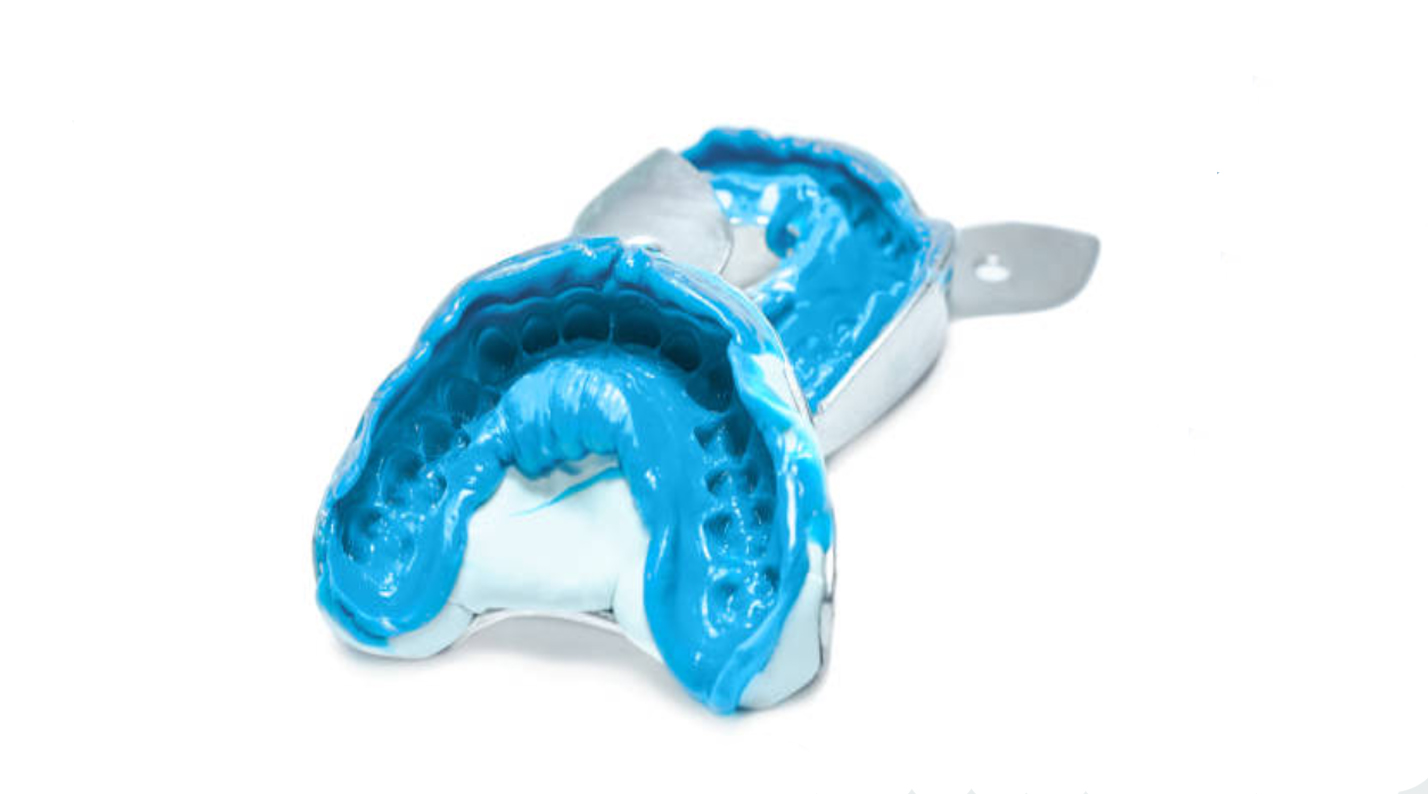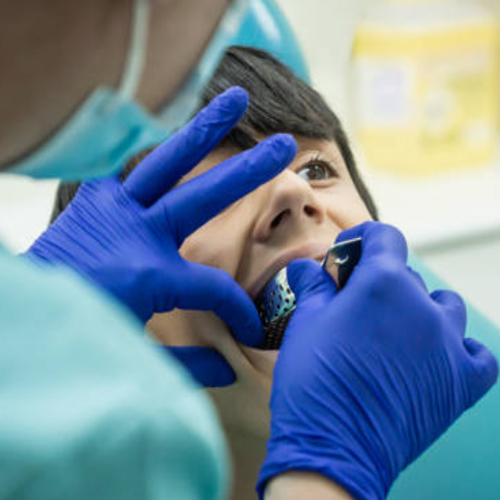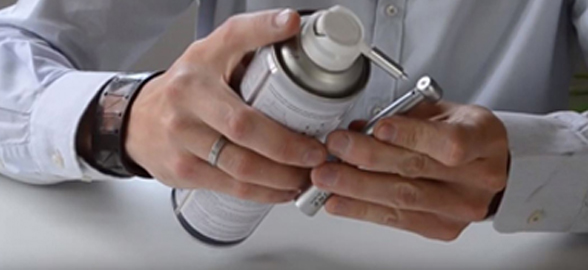In many dental treatments, taking a dental impression is an important part of the process. Although it's a simple, everyday task in the clinic, it's important that it is carried out correctly and to pick the right materials to avoid mistakes in the subsequent treatment.
In today's article we're going to remind you of everything you need to take into account when taking a dental impression, as well as the uses and advantages of alginate and silicone... and much more! Don't miss it, let's get started!

Dental impression materials are used to achieve a negative reproduction of the tissues of the oral cavity, which is then used to produce the model we need. In addition, when choosing the materials for dental impressions, a series of characteristics must be taken into account:
- Dimensional stability in terms of temperature and humidity
- Component toxicity
- Handling, consistency and texture
- Compatability with water
- Strength, elasticity and dimensional stability
- Compatibility with modelling materials and moulds
- Accuracy and results time
- Susceptibility to disinfection and shelf life
- Pleasant odour and flavour
So what materials are these uses and characteristics referring to? Alginates and silicones! They are two of the most used materials for dental impressions. Although it is also relevant to mention other materials such as dental plaster, impression bite wax or the polyether.
➔ Uses and benefits of alginate in dentistry
The alginates for impressions, are elastic materials obtained from soluble salts of alginic acid that come from marine algae.
When should dental alginate be used?
Alginate is a material used in dentistry to make impressions of teeth and adjacent soft tissues. Dental impressions are usually taken in specialities such as prosthetics and surgery. Alginate is also used to take primary impressions for the subsequent fabrication of partial, total or removable dentures. Finally, it is also used in the design of orthodontic study models and the assembly of articulators.
What are the advantages and disadvantages of using dental alginate?
Advantages:
- They are cheaper.
- Easier handling
- Good shelf life
- Good hydrophilic properties
Disadvantages:
- Dimensional instability
- Elastic recovery
- Entire impression needs to be washed out

VIDU alginate for dental impression with high precision and stability
Let us show you an alginate that not only offers you quality, but also makes your dental practice more environmentally sustainable! The alginate from VIDU, the brand with zero plastic footprint. This alginate is chromatic which makes it easy to use and work with. It helps when preparing impressions without having to worry about temperature changes or water hardness.
It is a highly accurate and elastic material providing great detail definition. But that's not all! It has the advantage of being Plastic Neutral:
- Weight of plastic used = 10 gr.
- Weight of plastic collected = 10 gr.
This means that the plastic footprint generated by the packaging of the VIDU alginate (10 gr) is accounted for by collecting the same amount of plastic from the Mediterranean Sea, its shores and harbours.
Of course, at Dentaltix you can find a wide range of alginates, from the best brands!
➔ Uses and benefits of silicone in dentistry
Dental silicones are elastic materials, which allow deformation and are relatively easy to remove after solidification in the oral cavity. This makes the procedure easier, as it does not permanently deform the mould and does not pose any danger to the patient.
Dental silicones have several classifications and it is important to know them in order to choose one:
- Chemical formulation (addition silicones and condensation silicones).
- Consistency.
- Polymerisation speed.
When should they be used?
Silicone, being a more elastic material, allows more uses for dentists than alginates. With regard to impressions, for example, silicones are used in root canal cases, soft structures and bone tissues, as well as implants and functional impressions of complete prostheses.
Other uses for silicone include reproductions of fractured teeth through impression procedures. It also serves as a material for recording occlusal relationships due to its accuracy and dimensional stability.
Finally, it plays an important role in total jaw impressions, with or without teeth, or partial impressions for some parts of arches in preparations for inscriptions, crowns and bridges.
Addition Silicone: what are its uses, advantages and disadvantages?
The main suggestions for use are for single, quadrant and full dentures, as well as removable partial and full dentures. Also used for fixed bridges, crowns, inlays, onlays and overlays.
Addition silicone, in spite of its high cost, has many benefits:
- Excellent dimensional stability
- It's the most accurate material available
- High recovery from deformation
- 7 days guaranteed print stability
- Easy disinfection in aqueous solutions of 2% glutaraldehyde or 0.5% sodium hypochlorite between 30 - 60 minutes.
... And its disadvantages?
- Sensitive to pollutants
- Release of hydrogen during polymerisation, so emptying cannot be immediate
- Latex gloves must not be used during handling
- More difficult to remove from the mould
Dentaltix also offers a wide range of addition silicones, catalysts and complete kits. Due to our diversity of brands, we have a range of products with different characteristics available.
➔TIPS for dental silicone impressions
- Do not mix with gloves: the chemical used in the manufacture of latex gloves inhibits the polymerisation of elastomeric impression materials.
- Avoid contact of the silicones with astringents: these can influence the setting time of the addition silicones.
So now we've told you about the uses and characteristics of conventional impression materials, it is important to add a final note about the digital transformation in dentistry: your practices greatest ally. As in most areas of our daily lives, technology is our great ally, and the same goes in dentistry. And the impression of the future is digital, which would avoid the use of impression materials.
Some of the advantages of digital dental printing are that it leaves no material residue, greater comfort and accuracy, eliminates errors in casting... etc.
So, what do you think about conventional impressions vs. digital impressions? Leave it in the comments! If you want to keep up to date with all the latest news from the dental sector on a weekly basis, follow us on our social networks and youtube channel! You won't regret it! See you in the next article, until next time!





